三特丁基膦 ,tris(1,1-dimethylethyl)phosphine
产品编号:SIGMA-655325| CAS NO:13716-12-6| 分子式:C12H27P| 分子量:202.3165
本网站销售的所有产品仅用于工业应用或者科学研究等非医疗目的,不可用于人类或动物的临床诊断或者治疗,非药用,非食用,
| 产品名称 | 三特丁基膦 |
|---|---|
| 英文名称 | tris(1,1-dimethylethyl)phosphine |
| CAS编号 | 13716-12-6 |
| 产品熔点 | 30-35 °C(lit.) |
| 产品沸点 | 229.4±9.0 °C at 760 mmHg |
| 产品密度 | 0.861 g/mL at 25 °C |
| 产品闪点 | 94.6±25.0 °C |
| 精确质量 | 202.185043 |
| PSA | 13.59000 |
| LogP | 4.50 |
| 外观性状 | 透明液体(在10%己烷) |
| 蒸气压 | 0.1±0.4 mmHg at 25°C |
| 溶解性 | insoluble |
| 稳定性 | 对空气非常敏感,必须在低温下隔绝空气保存。对它的操作必须在手套箱或惰性气体保护下进行。 |
| 储存条件 | 在低温下隔绝空气保存。 |
相关文档
化学品安全说明书(MSDS)
下载MSDS质检证书(COA)
相关产品
| 符号 |
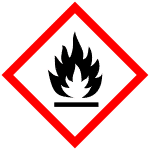
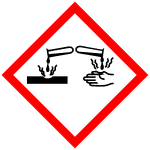

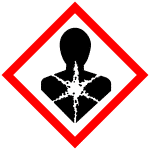
GHS02, GHS05, GHS07, GHS08 |
|---|---|
| 信号词 | Danger |
| 危害声明 | H225-H250-H304-H314-H336-H361d-H373 |
| 警示性声明 | P210-P280-P301 + P310-P302 + P334-P303 + P361 + P353-P304 + P340 + P310-P305 + P351 + P338-P331-P422 |
| 个人防护装备 | Faceshields;full-face respirator (US);Gloves;Goggles;multi-purpose combination respirator cartridge (US);type ABEK (EN14387) respirator filter |
| 危害码 (欧洲) | F:Flammable;C:Corrosive; |
| 风险声明 (欧洲) | R17;R34 |
| 安全声明 (欧洲) | S26-S45-S62-S36/37/39-S25-S43-S27-S16 |
| 危险品运输编码 | UN 2846 4.2/PG 1 |
| WGK德国 | 3 |
| 包装等级 | I |
| 危险类别 | 4.2 |
| 海关编码 | 2931900090 |
Synonym: Section 2 - COMPOSITION, INFORMATION ON INGREDIENTS
Risk Phrases: 17 34 Section 3 - HAZARDS IDENTIFICATION EMERGENCY OVERVIEW
Spontaneously flammable in air. Causes burns.Air sensitive. Potential Health Effects Eye: Causes eye burns. Lachrymator (substance which increases the flow of tears). Skin: Causes skin burns. Ingestion: Causes gastrointestinal tract burns. Inhalation: Causes chemical burns to the respiratory tract. Chronic: Not available. Section 4 - FIRST AID MEASURES Eyes: Immediately flush eyes with plenty of water for at least 15 minutes, occasionally lifting the upper and lower eyelids. Get medical aid immediately. Skin: Get medical aid immediately. Immediately flush skin with plenty of water for at least 15 minutes while removing contaminated clothing and shoes. Ingestion: Do not induce vomiting. If victim is conscious and alert, give 2-4 cupfuls of milk or water. Get medical aid immediately. Inhalation: Remove from exposure and move to fresh air immediately. If not breathing, give artificial respiration. If breathing is difficult, give oxygen. Get medical aid. Notes to Physician: Section 5 - FIRE FIGHTING MEASURES General Information: As in any fire, wear a self-contained breathing apparatus in pressure-demand, MSHA/NIOSH (approved or equivalent), and full protective gear. Material can spontaneously ignite (pyrophoric) when exposed to air at normal or slightly elevated temperatures. Extinguishing Media: Use foam, dry chemical, or carbon dioxide. Section 6 - ACCIDENTAL RELEASE MEASURES General Information: Use proper personal protective equipment as indicated in Section 8. Spills/Leaks: Absorb spill with inert material (e.g. vermiculite, sand or earth), then place in suitable container. Remove all sources of ignition. Use a spark-proof tool. Section 7 - HANDLING and STORAGE Handling: Use spark-proof tools and explosion proof equipment. Do not breathe dust, vapor, mist, or gas. Do not get in eyes, on skin, or on clothing. Use only in a chemical fume hood. Store and handle protected from air. Storage: Store in a cool, dry place. Store in a tightly closed container. Flammables-area. Do not expose to air. Store under an inert atmosphere. Section 8 - EXPOSURE CONTROLS, PERSONAL PROTECTION Engineering Controls: Use adequate ventilation to keep airborne concentrations low. Exposure Limits CAS# 13716-12-6: Personal Protective Equipment Eyes: Not available. Skin: Wear appropriate protective gloves to prevent skin exposure. Clothing: Wear appropriate protective clothing to prevent skin exposure. Respirators: Follow the OSHA respirator regulations found in 29 CFR 1910.134 or European Standard EN 149. Use a NIOSH/MSHA or European Standard EN 149 approved respirator if exposure limits are exceeded or if irritation or other symptoms are experienced. Section 9 - PHYSICAL AND CHEMICAL PROPERTIES Physical State: Solid Color: colorless Odor: unpleasant odor pH: Not available. Vapor Pressure: Not available. Viscosity: Not available. Boiling Point: 102 - 103 deg C @ 13.00mm Hg Freezing/Melting Point: Not available. Autoignition Temperature: Not available. Flash Point: -17 deg C ( 1.40 deg F) Explosion Limits, lower: Not available. Explosion Limits, upper: Not available. Decomposition Temperature: Solubility in water: Insoluble. Specific Gravity/Density: .8200g/cm3 Molecular Formula: C12H27P Molecular Weight: 202.32 Section 10 - STABILITY AND REACTIVITY Chemical Stability: Not available. Conditions to Avoid: Incompatible materials, ignition sources, exposure to air. Incompatibilities with Other Materials: Strong oxidizing agents. Hazardous Decomposition Products: Carbon monoxide, oxides of phosphorus, carbon dioxide. Hazardous Polymerization: Has not been reported Section 11 - TOXICOLOGICAL INFORMATION RTECS#: CAS# 13716-12-6 unlisted. LD50/LC50: Not available. Carcinogenicity: Tri-tert-butylphosphine - Not listed by ACGIH, IARC, or NTP. Section 12 - ECOLOGICAL INFORMATION Section 13 - DISPOSAL CONSIDERATIONS Dispose of in a manner consistent with federal, state, and local regulations. Section 14 - TRANSPORT INFORMATION IATA Shipping Name: PYROPHORIC LIQUID, ORGANIC, N.O.S.* Hazard Class: 4.2 UN Number: 2845 Packing Group: I IMO Shipping Name: PYROPHORIC LIQUID, ORGANIC, N.O.S. Hazard Class: 4.2 UN Number: 2845 Packing Group: I RID/ADR Not regulated as a hazardous material. Section 15 - REGULATORY INFORMATION European/International Regulations European Labeling in Accordance with EC Directives Hazard Symbols: F C Risk Phrases: R 17 Spontaneously flammable in air. R 34 Causes burns. Safety Phrases: S 25 Avoid contact with eyes. S 36/37/39 Wear suitable protective clothing, gloves and eye/face protection. S 45 In case of accident or if you feel unwell, seek medical advice immediately (show the label where possible). WGK (Water Danger/Protection) CAS# 13716-12-6: No information available. Canada None of the chemicals in this product are listed on the DSL/NDSL list. CAS# 13716-12-6 is not listed on Canada's Ingredient Disclosure List. US FEDERAL TSCA CAS# 13716-12-6 is not listed on the TSCA inventory. It is for research and development use only. SECTION 16 - ADDITIONAL INFORMATION N/A |

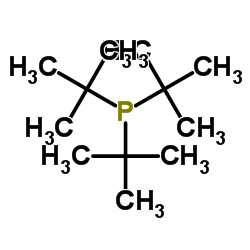
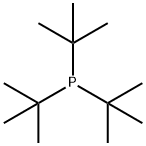
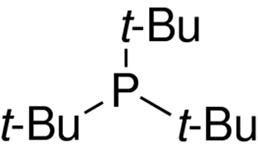





 浙公网安备 33010802013016号
浙公网安备 33010802013016号